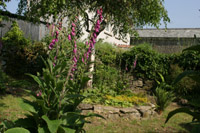A pleasing characteristic of the village is the arrangement and construction of the houses which are varied in style and choice of materials; modest cottages with roofs of thatch or slate are juxtaposed at diverse angles to detached residences of some grandeur. Eden Phillpotts' novel The Secret Woman published in 1905 is set in Belstone and its surroundings. This passage draws attention to the diversity of the village's houses when viewed from Watchet Hill, reached by a short climb towards the moor from the south-west exit:
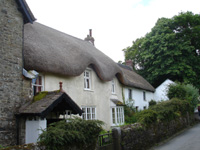
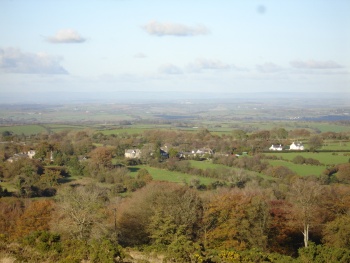
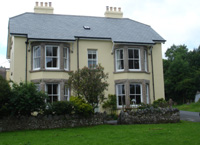
The year 1905 was towards the end of a period from 1890 during which the centre of the village expanded from a collection of 9 farms and a similar number of cottages by the construction of 21 new houses, thereby beginning the transformation from an agricultural settlement to the more residential community that we see today. Not every commentator was happy with this change. Dora James' book on Belstone from 1911 contains this rebuke against Dartmoor House that was completed in 1896:
This carping seems misplaced to the present-day visitor, as the house looks most attractive with its newly refurbished slate roof. But we weren't around to make the comparison, so maybe Dora should be given the benefit of the doubt. What became of those unfortunates who lived in the disappearing cottages, I wonder?
Despite the demise of those mentioned above, several thatched properties from earlier times remain to this day, including Dagworthy, part of which was built in the early 1700s, and Andrews Cottage which dates from the 17th century. John Andrew who died in 1676 may have been an early occupant of the latter. One William Ellis who lived there all his adult life until his death in 1936, was apparently a jack-of-all-trades on an epic scale. The Book of Belstone puts it this way:
The Dartmoor guiding took up most of his time, according to his granddaughter; a round trip to Cranmere Pool and back would take a fair slice of the day. The portreeve is a locally elected official, a roll dating from Saxon times, whose job today is to oversee the protection of the common lands within the parish; for example, to ensure that outsiders are not taking commoners' rights such as cutting peat, and that no-one is trying to enclose the commons adjacent to their property.
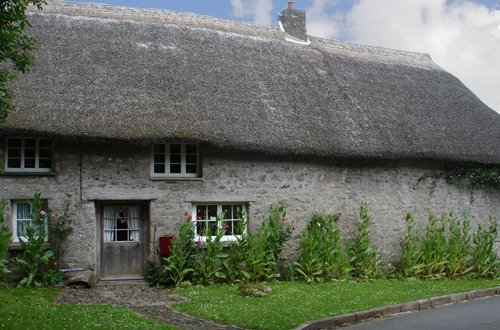
Another somewhat surprising put-down for the village comes in Devon by W.G. Hoskins, written in 1954:
I can barely imagine what Hoskins would have made of the truly appalling modern housing developments that have blighted nearby Okehampton, had he lived to see them go up. Fortunately for Belstone, it has been spared this fate.
With the change in character of the village over the last century or so, the residents have become accustomed, perhaps reluctantly, to the ever increasing influx of tourists using Belstone as the northern gateway to Dartmoor. Nevertheless there has been a firm resolve by the locals to retain the spirit of a working community, rather than have the village turned into a pretty-postcard tourist magnet. Initiatives at various times since the 1970s, including designation as a Honeypot site, acquiring Conservation Area Status, and entering Best Kept Village competitions, have been roundly rejected by the parish council, sometimes after wider consultation.
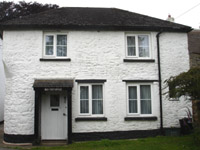
The white-fronted cottage named "Old Post Office" opened as a butcher at the time of the Great War, before being converted to a Post Office in 1920, its home until 1928. The business then passed to Ivan and May Westaway who operated it from their own residence, Hillside, up to 1937 when it transferred to the Zion Chapel, built by the non-conformist Calvinistic Independent Dissenters in 1841. Here it remained until it was closed in 2002, leaving only the red telephone kiosk, letter box, and the Telegraph Office sign as reminders of its previous function.
The village Post Office is something of an endangered species in these parts. Belstone is no exception, and the all that remains of the service in 2007 is a Post Office counter opening on Tuesday and Thursday mornings in the Village Hall.
Belstone is without a village shop of any kind today, but is blessed with a popular free house inn, The Tors, noted for its extensive range of single malts. It also provides good quality food and offers limited B & B accommodation.
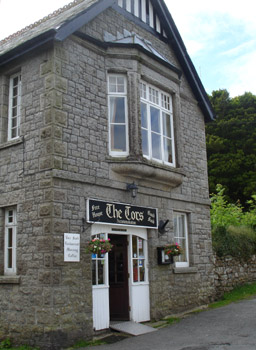
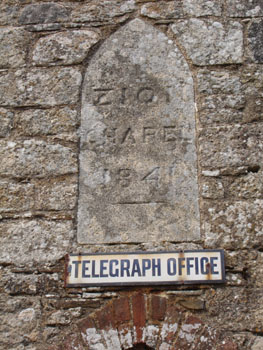
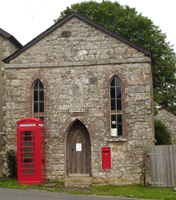
Historically the Belstone Manor Pound was used to contain stray or illegally pastured livestock. The fines paid for their release would go into the coffers of the Lord of the Manor.

The Book of Belstone gives us this anecdote related by William Brock, poundkeeper for many years up to his death in 1913:
The pound gradually fell into disrepair after Brock's tenure as poundkeeper, and it eventually became a village rubbish tip. In 1988 it was renovated and converted to a walled garden for quiet contemplation. Seats were added at some point, but they are nowhere to be seen in 2007.
